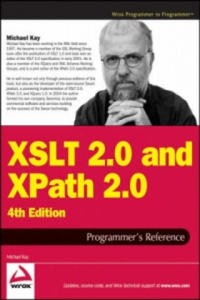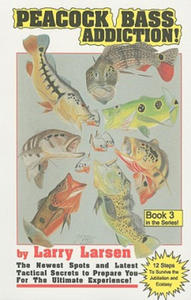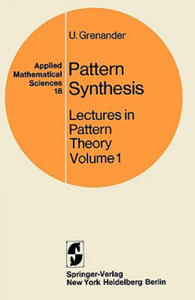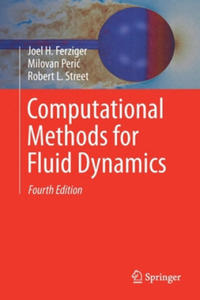libristo chapter 13 publishing
- znaleziono 16 produktów w 3 sklepach
Spalona Żywcem Wyd. Kieszonkowe - Souad
Książki & Multimedia > Książki
Opis - Pierwsze na świecie świadectwo ofiary zbrodni honorowej. Miała siedemnaście lat i zakochała się: zhańbiła rodzinę. Więc rodzina wydała na nią wyrok śmierci... Pokochała go pierwszą miłością. Myślała, że się z nią ożeni. Ale ukochany zniknął, a ona odkryła, że jest w ciąży. A w jej świecie to najcięższa zbrodnia... W zapomnianej przez Boga wiosce w Cisjordanii kobiety są warte mniej niż zwierzęta domowe. Tu mężczyzna jest panem życia i śmierci żony, córki, siostry. Brat może bezkarnie zabić siostrę, matka - córkę, kolejną bezużyteczną dziewczynkę, jaka się urodzi. Tu kobiecie odbiera się godność, a nawet życie zgodnie z odwiecznym obyczajem i uświęconą tradycją. A śmierć jest karą dla dziewczyny, która zhańbi rodzinę. Tak jak Souad. Wyrok wydaje jej ojciec. Szwagier dokonuje egzekucji. Oblewa Souad benzyną i podpala... SOUAD przeżyła - cudem, ale rodzina usiłowała zabić ją nawet w szpitalu. Na zawsze jednak pozostanie straszliwie okaleczona - na ciele i duszy. I wciąż musi się ukrywać; dopóki żyje, jej rodzinę okrywa hańba. Spalona żywcem, opublikowana pod pseudonimem szokująca opowieść o piekle, jakim było jej dzieciństwo i młodość, stała się międzynarodowym bestsellerem. Wydana w 37 w krajach książka przerywa tabu milczenia wobec istniejącej nadal w krajach muzułmańskich barbarzyńskiej tradycji. Nieludzkiego obyczaju, prawa mężczyzn, na mocy którego co najmniej pięć tysięcy kobiet pada co roku ofiarą zbrodni honorowej. Nazwa - Spalona Żywcem Wyd. Kieszonkowe Autor - Souad Oprawa - Miękka Wydawca - Amber Kod ISBN - 9788324159406 Kod EAN - 9788324159406 Wydanie - 1 Rok wydania - 2016 Tłumacz - 31182,maria rostworowska; Format - 110 x 175 x 14 Ilość stron - 224 Podatek VAT - 5% Premiera - 2016-06-23
Sklep: InBook.pl
Cul-de-Sac Kids Collection Three - Books 13-18 Baker Publishing Group
Książki / Literatura obcojęzyczna
A lighthearted chapter book series for young readers written by bestselling author Beverly Lewis! Each book centers on the often-humorous escapades of these endearing neighborhood friends as they solve mysteries and learn the value of friendship and faith. This collection includes books 13 through 18 in the series.
Sklep: Libristo.pl
DIY Woodwork: 13 Woodworking Projects for Your Backyard and Garden Createspace Independent Publishing Platform
Książki / Literatura obcojęzyczna
Getting Your FREE Bonus Download this book, read it to the end and see "BONUS: Your FREE Gift" chapter after the conclusion. DIY Woodwork: 13 Woodworking Projects for Your Backyard and Garden If you like the idea of working with
Sklep: Libristo.pl
XSLT 2.0 and XPath 2.0 Programmer's Reference 4e John Wiley & Sons Inc
Książki / Literatura obcojęzyczna
This book is primarily a practical reference book for professional XSLT developers. It assumes no previous knowledge of the language, and many developers have used it as their first introduction to XSLT; however, it is not structured as a tutorial, and there are other books on XSLT that provide a gentler approach for beginners. The book does assume a basic knowledge of XML, HTML, and the architecture of the Web, and it is written for experienced programmers. There's no assumption that you know any particular language such as Java or Visual Basic, just that you recognize the concepts that all programming languages have in common. The book is suitable both for XSLT 1.0 users upgrading to XSLT 2.0, and for newcomers to XSLT. The book is also equally suitable whether you work in the Java or .NET world. As befits a reference book, a key aim is that the coverage should be comprehensive and authoritative. It is designed to give you all the details, not just an overview of the 20 percent of the language that most people use 80 percent of the time.It's designed so that you will keep coming back to the book whenever you encounter new and challenging programming tasks, not as a book that you skim quickly and then leave on the shelf. If you like detail, you will enjoy this book; if not, you probably won't. But as well as giving the detail, this book aims to explain the concepts, in some depth. It's therefore a book for people who not only want to use the language but who also want to understand it at a deep level. The book aims to tell you everything you need to know about the XSLT 2.0 language. It gives equal weight to the things that are new in XSLT 2.0 and the things that were already present in version 1.0. The book is about the language, not about specific products. However, there are appendices about Saxon (the author's own implementation of XSLT 2.0), about the Altova XSLT 2.0 implementation, and about the Java and Microsoft APIs for controlling XSLT transformations, which will no doubt be upgraded to handle XSLT 2.0 as well as 1.0. A third XSLT 2.0 processor, Gestalt, was released shortly before the book went to press, too late to describe it in any detail. But the experience of XSLT 1.0 is that there has been a very high level of interoperability between different XSLT processors, and if you can use one of them, then you can use them all.In the previous edition we split XSLT 2.0 and XPath 2.0 into separate volumes. The idea was that some readers might be interested in XPath alone. However, many bought the XSLT 2.0 book without its XPath companion and were left confused as a result; so this time, the material is back together. The XPath reference information is in self-contained chapters, so it should still be accessible when you use XPath in contexts other than XSLT. The book does not cover XSL Formatting Objects, a big subject in its own right. Nor does it cover XML Schemas in any detail. If you want to use these important technologies in conjunction with XSLT, there are other books that do them justice. This book contains twenty chapters and eight appendixes (the last of which is a glossary) organized into four parts. The following section outlines what you can find in each part, chapter, and appendix. Part I: Foundations: The first part of the book covers essential concepts. You should read these before you start coding.If you ignore this advice, as most people do, then you read them when you get to that trough of despair when you find it impossible to make the language do anything but the most trivial tasks. XSLT is different from other languages, and to make it work for you, you need to understand how it was designed to be used. Chapter 1: XSLT in Context: This chapter explains how XSLT fits into the big picture: how the language came into being and how it sits alongside other technologies. It also has a few simple coding examples to keep you alert. Chapter 2: The XSLT Processing Model: This is about the architecture of an XSLT processor: the inputs, the outputs, and the data model. Understanding the data model is perhaps the most important thing that distinguishes an XSLT expert from an amateur; it may seem like information that you can't use immediately, but it's knowledge that will stop you making a lot of stupid mistakes. Chapter 3: Stylesheet Structure: XSLT development is about writing stylesheets, and this chapter takes a bird's eye view of what stylesheets look like.It explains the key concepts of rule-based programming using templates, and explains how to undertake programming-in-the-large by structuring your application using modules and pipelines. Chapter 4: Stylesheets and Schemas: A key innovation in XSLT 2.0 is that stylesheets can take advantage of knowledge about the structure of your input and output documents, provided in the form of an XML Schema. This chapter provides a quick overview of XML Schema to describe its impact on XSLT development. Not everyone uses schemas, and you can skip this chapter if you fall into that category. Chapter 5: The Type System: XPath 2.0 and XSLT 2.0 offer strong typing as an alternative to the weak typing approach of the 1.0 languages. This means that you can declare the types of your variables, functions, and parameters, and use this information to get early warning of programming errors. This chapter explains the data types available and the mechanisms for creating user-defined types. Part II: XSLT and XPath Reference: This section of the book contains reference material, organized in the hope that you can easily find what you need when you need it.It's not designed for sequential reading, though you might well want to leaf through the pages to discover what's there. Chapter 6: XSLT Elements: This monster chapter lists all the XSLT elements you can use in a stylesheet, in alphabetical order, giving detailed rules for the syntax and semantics of each element, advice on usage, and examples. This is probably the part of the book you will use most frequently as you become an expert XSLT user. It's a "no stone unturned" approach, based on the belief that as a professional developer you need to know what happens when the going gets tough, not just when the wind is in your direction. Chapter 7: XPath Fundamentals: This chapter explains the basics of XPath: the low-level constructs such as literals, variables, and function calls. It also explains the context rules, which describe how the evaluation of XPath expressions depends on the XSLT processing context in which they appear. Chapter 8: XPath: Operators on Items: XPath offers the usual range of operators for performing arithmetic, boolean comparison, and the like.However, these don't always behave exactly as you would expect, so it's worth reading this chapter to see what's available and how it differs from the last language that you used. Chapter 9: XPath: Path Expressions: Path expressions are what make XPath special; they enable you to navigate around the structure of an XML document. This chapter explains the syntax of path expressions, the 13 axes that you can use to locate the nodes that you need, and associated operators such as union, intersection, and difference. Chapter 10: XPath: Sequence Expressions: Unlike XPath 1.0, in version 2.0 all values are sequences (singletons are just a special case). Some of the most important operators in XPath 2.0 are those that manipulate sequences, notably the "for" expression, which translates one sequence into another by applying a mapping. Chapter 11: XPath: Type Expressions: The type system was explained in Chapter 5; this chapter explains the operations that you can use to take advantage of types. This includes the "cast" operation which is used to convert values from one type to another.A big part of this chapter is devoted to the detailed rules for how these conversions are done.Chapter 12: XSLT Patterns: This chapter returns from XPath to a subject that's specific to XSLT. Patterns are used to define template rules, the essence of XSLT's rule-based programming approach. The reason for explaining them now is that the syntax and semantics of patterns depends strongly on the corresponding rules for XPath expressions. Chapter 13: The Function Library: XPath 2.0 includes a library of functions that can be called from any XPath expression; XSLT 2.0 extends this with some additional functions that are available only when XPath is used within XSLT. The library has grown immensely since XPath 1.0. This chapter provides a single alphabetical reference for all these functions. Chapter 14: Regular Expressions: Processing of text is an area where XSLT 2.0 and XPath 2.0 are much more powerful than version 1.0, and this is largely through the use of constructs that exploit regular expressions. If you're familiar with regexes from languages such as Perl, this chapter tells you how XPath regular expressions differ. If you're new to the subject, it explains it from first principles.Chapter 15: Serialization: Serialization in XSLT means the ability to generate a textual XML document from the tree structure that's manipulated by a stylesheet. This isn't part of XSLT processing proper, so (following W3C's lead) it's separated it into its own chapter. You can control serialization from the stylesheet using an declaration, but many products also allow you to control it directly via an API. Part III: Exploitation: The final section of the book is advice and guidance on how to take advantage of XSLT to write real applications. It's intended to make you not just a competent XSLT coder, but a competent designer too. The best way of learning is by studying the work of others, so the emphasis here is on practical case studies. Chapter 16: Extensibility: This chapter describes the "hooks" provided in the XSLT specification to allow vendors and users to plug in extra functionality. The way this works will vary from one implementation to another, so we can't cover all possibilities, but one important aspect that the chapter does cover is how to use such extensions and still keep your code portable.Chapter 17: Stylesheet Design Patterns: This chapter explores a number of design and coding patterns for XSLT programming, starting with the simplest "fill-in-the-blanks" stylesheet, and extending to the full use of recursive programming in the functional programming style, which is needed to tackle problems of any computational complexity. This provides an opportunity to explain the thinking behind functional programming and the change in mindset needed to take full advantage of this style of development. Chapter 18: Case Study: XMLSpec: XSLT is often used for rendering documents, so where better to look for a case study than the stylesheets used by the W3C to render the XML and XSLT specifications, and others in the same family, for display on the web? The resulting stylesheets are typical of those you will find in any publishing organization that uses XML to develop a series of documents with a compatible look-and-feel. Chapter 19: Case Study: A Family Tree: Displaying a family tree is another typical XSLT application.This example with semi-structured data-a mixture of fairly complex data and narrative text-that can be presented in many different ways for different audiences. It also shows how to tackle another typical XSLT problem, conversion of the data into XML from a legacy text-based format. As it happens, this uses nearly all the important new XSLT 2.0 features in one short stylesheet. But another aim of this chapter is to show a collection of stylesheets doing different jobs as part of a complete application. Chapter 20: Case Study: Knight's Tour: Finding a route around a chessboard where a knight visits every square without ever retracing its steps might sound a fairly esoteric application for XSLT, but it's a good way of showing how even the most complex of algorithms are within the capabilities of the language. You may not need to tackle this particular problem, but if you want to construct an SVG diagram showing progress against your project plan, then the problems won't be that dissimilar. Part IV: Appendices: A ppendix A: XPath 2.0 Syntax Summary: Collects the XPath grammar rules and operator precedences into one place for ease of reference.Appendix B: Error Codes: A list of all the error codes defined in the XSLT and XPath language specifications, with brief explanations to help you understand what's gone wrong. Appendix C: Backward Compatibility: The list of things you need to look out for when converting applications from XSLT 1.0. Appendix D: Microsoft XSLT Processors: Although the two Microsoft XSLT processors don't yet support XSLT 2.0, we thought many readers would find it useful to have a quick summary here of the main objects and methods used in their APIs. Appendix E: JAXP: the Java API for XML Processing: JAXP is an interface rather than a product. Again, it doesn't have explicit support yet for XSLT 2.0, but Java programmers will often be using it in XSLT 2.0 projects, so the book includes an overview of the classes and methods available. Appendix F: Saxon: At the time of writing Saxon (developed by the author of this book) provides the most comprehensive implementation of XSLT 2.0 and XPath 2.0, so its interfaces and extensions are covered in some detail. Appendix G: Altova: Altova, the developers of XML Spy, have an XSLT 2.0 processor that can be used either as part of the development environment or as a freestanding component.This appendix gives details of its interfaces. Appendix H: Glossary Note: CD-ROM/DVD and other supplementary materials are not included as part of eBook file.
Sklep: Libristo.pl
KODY BŁEDÓW - PORADNIK HAYNES Haynes
ELEKTRONIKA I TELEKOMUNIKACJA
KODY BŁEDÓW - KOMPLEKSOWY PORADNIK HAYNES Kody wtrysku paliwa oraz zarządzania silnika Samochody i lekkie pojazdy użytkowe Książka ta jest kompleksowa instrukcja DIY dotycząca samochodowych kodów błędów diagnostycznych. Swoją treścią obejmuje: wyszukiwanie kodów z czytnikiem kodów błędów oraz bez niego, tabele kodów usterek (w tym systemy EOBD), testy czujników i siłowników, rozdziały dotyczące poszczególnych producentów, procedury usuwania kodów. W środku znajdziemy także unikalną kolorową sekcję ukazującą lokalizację wtyczek diagnostycznych EOBD. UWAGA! Oferowana książka wydana jest w języku angielskim (niedostępna w polskiej wersji językowej). Podczas korzystania z instrukcji można skorzystać ze specjalnego słownika technicznego, pobierając po kliknięciu angielsko-polski , ułatwiającego korzystanie z poradnika Haynes. Spis treści: GENERAL INFORMATION Introduction Safety first! Chapter 1 Introduction to Self-Diagnosis Chapter 2 Test equipment, training and technical data Chapter 3 General test procedures Chapter 4 Component test procedures SYSTEM SPECIFICS (BY MANUFACTURER) Chapter 5 Alfa Romeo Chapter 6 Audi Chapter 7 BMW Chapter 8 Citroen Chapter 9 Daewoo Chapter 10 Daihatsu Chapter 11 Fiat Chapter 12 Ford Chapter 13 Honda Chapter 14 Hyundai Chapter 15 Isuzu Chapter 16 Jaguar Chapter 17 Kia Chapter 18 Lancia Chapter 19 Land Rover Chapter 20 Lexus Chapter 21 Mazda Chapter 22 Mercedes Chapter 23 Mitsubishi Chapter 24 Nissan Chapter 25 Peugeot Chapter 26 Proton Chapter 27 Renault Chapter 28 Rover Chapter 29 Saab Chapter 30 Seat Chapter 31 Skoda Chapter 32 Subaru Chapter 33 Suzuki Chapter 34 Toyota Chapter 35 Vauxhall/Opel Chapter 36 Volkswagen Chapter 37 Volvo Chapter 38 EOBD diagnostic plug locations REFERENCE Abbreviations, Warnings and Glossary of technical terms
Sklep: MOTODANE
Video Encoding by the Numbers Doceo Publishing
Książki / Literatura obcojęzyczna
Video Encoding by the Numbers teaches you to optimize the quality and efficiency of your streaming video by objectively detailing the impact of critical configuration options with industry-standard quality metrics like PSNR and SSIMplus. This takes the guesswork out of most encoding decisions and allows readers to achieve the optimal quality/data rate tradeoff. Since all videos encode differently, the tests detailed in the book involve eight different videos, including movie footage, animations, talking head footage, a music video, and PowerPoint and Camtasia-based videos. The book walks the reader through quality testing, basic encoding configurations, encoding with H.264, HEVC, and VP9, and and encoding for adaptive streaming. When appropriate, the chapters conclude with a section detailing how to configure the options discussed with FFmpeg, a preferred tool for high-volume video producers, including packaging into HLS and DASH formats (the latter with MP4Box). You'll also learn how to use key Apple HLS creation and checking tools like Media File Segmenter and Variant Playlist Creator. Here's a chapter-by-chapter description. Chapter 1: Technology Fundamentals. Encoding basics like codecs and container formats for newbies, or for a quick refresher for advanced users. Chapter 2: Basic File Parameters. File parameters like data rate, resolution, frame rate, and bits-per-pixel defined at a high level. Chapter 3: Essential Tools. Identifies the tools you'll need to deliver file information that you simply can't live without. Chapter 4: Testing Overview. Covers a range of testing procedures, from choosing a test clip to verifying your encodes before applying the metric. Chapter 5: Working with Moscow University Video Quality Measurement Tool. Chapter 6: Working with SSIMWave Quality of Experience Monitor. Chapter 7: Choosing Data Rate. Now that you know how to use multiple objective benchmarks, you'll apply that knowledge to choose optimal data rates for your files. Chapter 8: Bitrate Control. You'll learn the impact of bitrate control techniques like VBR and CBR on file quality and deliverability. Chapter 9: I-, B-, P-, and Reference Frames. Rules for choosing key frame and B-frame interval, and the number of reference frames. Chapter 10: Encoding H.264. Learn how to configure H.264-specific configuration options like profiles, levels, and entropy encoding, and x264 encoding options like presets and tuning. Chapter 11: Encoding HEVC. Learn where to deploy the HEVC codec, and how to encode with x265, a high-quality, open-source HEVC codec and with the Adobe Media Encoder. Chapter 12: Encoding VP9. Learn where to deploy the VP9 codec, how quality compares with HEVC and H.264, and how to encode VP9 with FFmpeg. Chapter 13: Choosing an ABR Technology. Learn how ABR works, and how to choose between technologies like HTTP Live Streaming (HLS), Dynamic Adaptive Streaming over HTTP (DASH), and others. Chapter 14: Configuring Your Encoding Ladder. Learn how to choose and configure the rungs in your encoding ladder. Chapter 15: Encoding and Packaging ABR Streams. Learn how to use FFmpeg to create your encoding ladder, and create media and master playlists for your HLS streams. You'll also get an extensive look at the Apple tools for HLS creation, Media File Segmenter, Variant Playlist Creator, and Media Stream Validator. For DASH, you'll learn how to use open-source tool MP4Box to create MPD files. &
Sklep: Libristo.pl
History of Terrestrial Mammals in South America Springer International Publishing AG
Książki / Literatura obcojęzyczna
This book takes a non-technical approach in covering the evolution of South American mammalian fauna throughout geological history, and discusses how South America has changed due to mammalian invasions. Unlike other works on the subject, this book attempts to answer several crucial questions that often go unmentioned together in one cohesive monograph. What was the fauna like before the American interchange? What were the origins of the now-extinct groups when northern species arrived and out-competed them? How did the modern mammalian fauna come into being with such disparate animal groups? This information is given from a historical perspective throughout the book's 15 chapters, and is presented in an easily graspable fashion by mostly avoiding technical language. The book is written for academics, scientists and scholars engaged in paleontology, zoology and evolutionary biology, but may also appeal to a larger audience of general readers interested in mammalian evolution.The book begins with an introduction, describing the tools necessary to interpret the evolutionary history of South American mammals in geological terms and some of the early people who helped found South American mammalian paleontology. Chapter 2 describes the Mesozoic first mammals of Gondwana and what we are learning about them, dominant before the K/T extinction event. Then chapters 3 through 8 cover the Cenozoic, or "Age of Mammals", highlighting the major mammalian groups of South America that replaced the earlier mammals of Gondwana. These groups include the marsupials, native ungulates, the xenarthrans (armadillos, anteaters, sloths), the caviomorphs (rodents), and the platyrrhine monkeys. Chapters 9 and 10 address the Antarctic La Meseta fossils and the Colombian La Venta fossil faunal assemblages. Chapter 11 describes the origin of the Amazon River and the role it has played in the evolution of the mammals and other flora and fauna. Chapter 12 discusses the neotropical mammals that invaded the Caribbean Islands, and illustrates the influence South America has had on adjacent faunas. Chapter 13 tells the story of the Great American Biotic Interchange (GABI), and chapter 14 follows this up with a discussion of the Pleistocene mammal communities and their eventual extinction. Chapter 15 concludes the text by discussing the modern mammals of South America, and how despite the extensive Pleistocene extinctions there is still a lot of mammalian diversity in South America.
Sklep: Libristo.pl
Biofuels and Biorefining Elsevier Science Publishing Co Inc
Książki / Literatura obcojęzyczna
Biofuels and Biorefining offers readers a holistic view of sustainable biofuels production from fundamental technologies to process intensification, while considering social, environmental, and economic impacts. This two-volume set addresses all aspects of biofuels production and co-production with value-added products and combines that with process intensification and optimization, providing an integrated guide to the cost effective and sustainable production of biofuels for future energy sustainability. Volume 2: Application and Assessment of Intensified Technologies (Vol. 2) considers intensification and optimization processes for biofuels and biomass-derived products in single and biorefinery schemes. Chapter one addresses the fundamental concepts of process intensification and its importance to biofuel production processes. Chapters 2-5 discuss the production processes for liquid biofuels, introducing all feasible intensification alternatives for each process. Chapter 6 applies process intensification methods to the production of value-added products. Chapters 7 to 9 discuss the importance of detailed CFD-based studies, controllability studies, and strategies for risk analysis in intensified processes. Chapter 10 introduces the concept of biorefinery for the co-production of biofuels/biomass derived value-added products, and the importance of process intensification in the biorefinery scheme. Finally, chapters 11 to 13 discuss how to ensure the sustainability of the intensified process and minimize the societal impact of biorefineries through various strategies including supply chain optimization and life cycle analysis. Each chapter is supported by industry case studies addressing the key aspects and impacts of intensification and optimization processes. Biofuels and Biorefining provides an integrated approach to biofuels production and process intensification that is useful to researchers involved in all aspects of bioenergy, particularly those interested in cost reduction, environmental impact, and enhanced production. Integrates basic concepts of process intensification and its application to the production of biofuels in a single resource Include case studies related to modelling, safety, control, supply chain, life cycle analysis, and CFD of biofuels production processes Provides a sustainability assessment of biorefinery systems from a life cycle perspective
Sklep: Libristo.pl
Peacock Bass Addition Book 3 Larsen's Outdoor Publishing
Książki / Literatura obcojęzyczna
Lakeland, FL -- There are few, if any, writers more qualified or knowledgeable about peacock bass as Larry Larsen. In this, his third book in the series, Larsen reveals new methods and locations from his continued experimentation and exploration.From his many travels, it is apparent to Larsen that anglers who have even just one opportunity to tangle with peacock bass quickly become addicts. This compilation of the very latest information will help all addicts enjoy the most optimal quality of angling possible. In addition, this book attempts to provide readers with an honest overview of the numerous opportunities in South America and around the world where peacock bass exist. It also covers a large variety of peacock bass camps and operators in each country.Each of the first 12 chapters focuses on geographic areas within the various countries that almost always produce good peacock bass fishing. Chapter 13 "Battles Won and Lost" provides an experienced viewpoint on how to win battles with the giants. It points out common ways to lose the fish of your dreams and ways to prevent such a catastrophe. Chapter 14 discusses the range and seasonal movements of the peacock bass, critical elements to the success of any South American venture. Fly fishing advice is also covered in Chapter 16."I'm often asked about the most appropriate tackle to carry along on an expedition, " says Larsen. "My favorite lures, tackle and the types of habitats to use them in are also detailed in this book. It is amazing how little consideration is given to the proper tackle by most anglers, " he adds. "This is perhaps the most important of all pre-trip planning checklists."
Sklep: Libristo.pl
Wpraw to w ruch. Proste mechanizmy dla wynalazców, majsterkowiczów i artystów - Dustyn Roberts
Książki & Multimedia > Książki
Opis - Podręcznik majsterkowicza! Każdy majsterkowicz marzy o zbudowaniu maszyny, która może być wprawiana w ruch. Koła zębate, przekładnie, napędy to kluczowe elementy, obok których żaden pasjonat majsterkowania nie przejdzie obojętnie! Jeżeli chcesz poznać skuteczne techniki ruchomego łączenia części, jeżeli chcesz zbudować maszynę wprawianą w ruch, to trafiłeś na rewelacyjną książkę, która wprowadzi Cię w świat mechanizmów. Sięgnij po nią i poznaj najczęściej stosowane materiały oraz dowiedz się, jak je łączyć i gdzie ich szukać. Na kolejnych stronach znajdziesz cenne informacje na temat mocowania różnych elementów oraz poznasz kluczowe pojęcia: siły, tarcia i momentu obrotowego. Uzbrojony w tę wiedzę, przystąpisz do poznawania źródeł mocy mechanicznej i elektrycznej oraz zbudujesz pojazd zasilany pułapką na myszy! Na sam koniec zobaczysz, jak korzystać z łożysk i sprzęgieł oraz nauczysz się łączyć proste maszyny w złożone układy. W tej unikalnej publikacji pokazano liczne projekty, których realizacja sprawi Ci mnóstwo frajdy. Książka ta musi znaleźć się na półce każdego szanującego się majsterkowicza! Sięgnij po tę książkę i: wybierz właściwe materiały do Twojego projektu poznaj połączenia rozłączne oraz nierozłączne opanuj techniki obliczania siły i momentu obrotowego wykorzystaj łożyska, sprzęgła, sprężyny i śruby zbuduj zaawansowaną maszynę Zbuduj wymarzoną maszynę! Zerknij na przykłady: - kliknij, by powiększyć: Dustyn Roberts - inżynier mechanik, nauczycielka. Założycielka firmy doradczej Dustyn Robots. Posiada szeroką wiedzę, zdobytą w trakcie studiów na uniwersytecie Carnegie Mellon, uniwersytecie Delaware oraz Politechnice Nowojorskiej. Nazwa - Wpraw to w ruch. Proste mechanizmy dla wynalazców, majsterkowiczów i artystów Oryginalny tytuł - Making Things Move DIY Mechanisms for Inventors, Hobbyists, and Artists Autor - Dustyn Roberts Oprawa - Miękka Wydawca - Helion Kod ISBN - 9788324698578 Kod EAN - 9788324698578 Rok wydania - 2015 Język - PL Tłumacz - Krzysztof Sawka Format - 170x230 Ilość stron - 344 Podatek VAT - 5% Premiera - 2015-03-12
Sklep: InBook.pl
Mediastinal Pathology Springer International Publishing AG
Książki / Literatura obcojęzyczna
The mediastinum is a hollow space within the thoracic cavity that may give rise to a wide spectrum of tumoral conditions from the benign to the intermediate to the highly malignant neoplasms. In addition, other inflammatory and infectious conditions may also arise in this space, which renders the practice of mediastinal pathology, almost a general surgical pathology practice. However, there are numerous mediastinal conditions that are important not only for diagnosis but also for treatment and clinical outcome. Due to the unusual location and because of the complexity of the tumors occurring in the mediastinum, there are only a few experts in this particular anatomic area. In fact, there are no more than 3-4 individuals worldwide with enough experience to properly diagnose, classify, and make treatment suggestions when these tumors arise in the mediastinum. More recent developments in tumor diagnosis and classification have created a vacuum in the general pathologist who often is confronted with this pathology and becomes uneasy about the specifics. For instance, recent developments in tumor pathology have led to the classification and staging of mediastinal tumors in more innovative ways that are in need of proper highlighting. Needless to say, even though there are a few publications on mediastinal pathology, the books are either obsolete or incomplete, in addition of providing superficial knowledge. Unfortunately and with all due respect to the authors of those publications, neither of those books is written by experts in the area. Rather the books were written out of the lack of information in mediastinal pathology. Even the World Health Organization (WHO) publication, which is truly more on lung and pleural neoplasms, has inserted in its contents a portion of mediastinal tumors, such portion not only is superficial and incomplete but also at least highly controversial if not flat out incorrect. . This text's goal is to present comprehensive and up to date information of the diverse pathology that can be encountered in the mediastinal compartment. The book will be divided in 11 different chapters based on the lineage of the diverse tumors that occur in the mediastinum, i.e. epithelial, neuroendocrine, lymphoid, etc (see table of contents). In addition, two separate chapters will be included -one on the radiological aspects and the others on the surgical approach to the different mediastinal tumors., bringing a total of 13 chapters. In the pathology section, the book will include current staging and classification systems of the different tumors. In addition, it will address the most current criteria for diagnosis and the differential diagnosis. Although the emphasis of the book is on diagnostic surgical pathology, every chapter will include the use of immunohistochemical techniques, electron microscopy, and molecular biology when necessary. The book will be extensively illustrated so that the reader will benefit of the different histomorphology of mediastinal tumors. Because of the nature of this specific anatomic area and the need to develop a standard text, Mediastinal Pathology should be of high interest to general surgical pathologists, thoracic pathologists in particular as well as thoracic surgeons, oncologists, and radiologists. Needless to say, this book will be of interest to pathology residents and fellows as well as to those seeking more in depth knowledge of thoracic - mediastinal pathology.
Sklep: Libristo.pl
Lectures in Pattern Theory. Vol.1 Springer, Berlin
Książki / Literatura obcojęzyczna
This book consists of updated and considerably expanded lecture notes. I am grateful to F. John, J. P. LaSalle, L. Sirovich and G. Whitham for accepting this preliminary manu script for the series Applied Mathematical Sciences published by Springer-Verlag. Many colleagues and students have helped with their comments and suggestions. Among them are D. E. McClure, I. Frolow, J. Silverstein, R. A. Vitale, and I would like to thank especially W. Freiberger for all his encouragement and help in many different ways. The work has been supported by the Division of Mathematica and Computer Sciences of the National Science Foundation, and I appreciate the positive interest shown by John Pasta, Kent curtis, Bruce Barnes and other program directors, over the years. I am indebted to E. Fonseca for her untiring and careful preparation of the manuscript, to E. Addison for her skillful help with the many diagrams, and to K. H. Avery, D. P. Libutti, K. MacDougall and S. V. Spinacci for the final typing. I gratefully acknowledge permission to reproduce figures, as mentioned in the text, to: American Elsevier Publishing Company, Inc., A. J. Larkin, and M. Gardner. I dedicate this work to my wife, Emma-Stina. June, 1975 Ulf Grenander, Providence TABLE OF CONTENTS INTRODUCTION 1 CHAPTER 1. THE GENERATORS 6 l. Generators and Their Properties 6 2. Abstract Generators 10 3. Concrete Generators 13 4.
Sklep: Libristo.pl
Outlier Analysis Springer International Publishing AG
Książki / Literatura obcojęzyczna
This book provides comprehensive coverage of the field of outlier analysis from a computer science point of view. It integrates methods from data mining, machine learning, and statistics within the computational framework and is therefore likely to appeal to multiple communities. The chapters of this book can be organized into three categories: Basic algorithms: Chapters 1 through 7 discuss the fundamental algorithms for outlier analysis, including probabilistic and statistical methods, linear methods, proximity-based methods, high-dimensional (subspace) methods, ensemble methods, and supervised methods.Domain-specific methods: Chapters 8 through 12 discuss outlier detection algorithms for various domains of data, such as text, categorical data, time-series data, discrete sequence data, spatial data, and network data.Applications: Chapter 13 is devoted to various applications of outlier analysis. Some guidance is also provided for the practitioner. New in this edition: The second edition of this book is more detailed and appeals to both researchers and practitioners. Significant new material has been added on topics such as kernel methods, one-class support-vector machines, matrix factorization, neural networks, outlier ensembles, time-series methods, and subspace methods. It is written as a textbook and can be used for classroom teaching. A solution manual is available for the numerous exercises at the end of the book.
Sklep: Libristo.pl
Computational Methods for Fluid Dynamics Springer International Publishing AG
Książki / Literatura obcojęzyczna
This book is a guide to numerical methods for solving fluid dynamics problems. The most widely used discretization and solution methods, which are also found in most commercial CFD-programs, are described in detail. Some advanced topics, like moving grids, simulation of turbulence, computation of free-surface flows, multigrid methods and parallel computing, are also covered. Since CFD is a very broad field, we provide fundamental methods and ideas, with some illustrative examples, upon which more advanced techniques are built. Numerical accuracy and estimation of errors are important aspects and are discussed in many examples. Computer codes that include many of the methods described in the book can be obtained online. This 4th edition includes major revision of all chapters; some new methods are described and references to more recent publications with new approaches are included. Former Chapter 7 on solution of the Navier-Stokes equations has been split into two Chapters to allow for a more detailed description of several variants of the Fractional Step Method and a comparison with SIMPLE-like approaches. In Chapters 7 to 13, most examples have been replaced or recomputed, and hints regarding practical applications are made. Several new sections have been added, to cover, e.g., immersed-boundary methods, overset grids methods, fluid-structure interaction and conjugate heat transfer.
Sklep: Libristo.pl
Outlier Analysis Springer International Publishing AG
Książki / Literatura obcojęzyczna
This book provides comprehensive coverage of the field of outlier analysis from a computer science point of view. It integrates methods from data mining, machine learning, and statistics within the computational framework and therefore appeals to multiple communities. The chapters of this book can be organized into three categories: Basic algorithms: Chapters 1 through 7 discuss the fundamental algorithms for outlier analysis, including probabilistic and statistical methods, linear methods, proximity-based methods, high-dimensional (subspace) methods, ensemble methods, and supervised methods.Domain-specific methods: Chapters 8 through 12 discuss outlier detection algorithms for various domains of data, such as text, categorical data, time-series data, discrete sequence data, spatial data, and network data.Applications: Chapter 13 is devoted to various applications of outlier analysis. Some guidance is also provided for the practitioner. The second edition of this book is more detailed and is written to appeal to both researchers and practitioners. Significant new material has been added on topics such as kernel methods, one-class support-vector machines, matrix factorization, neural networks, outlier ensembles, time-series methods, and subspace methods. It is written as a textbook and can be used for classroom teaching.
Sklep: Libristo.pl
szukaj w Kangoo libristo chapter 13 publishing
Sklepy zlokalizowane w miastach: Warszawa, Kraków, Łódź, Wrocław, Poznań, Gdańsk, Szczecin, Bydgoszcz, Lublin, Katowice
Szukaj w sklepach lub całym serwisie
1. Sklepy z libristo pl chapter 13 publishing
2. Szukaj na wszystkich stronach serwisu
t1=0.039, t2=0, t3=0, t4=0.015, t=0.039















